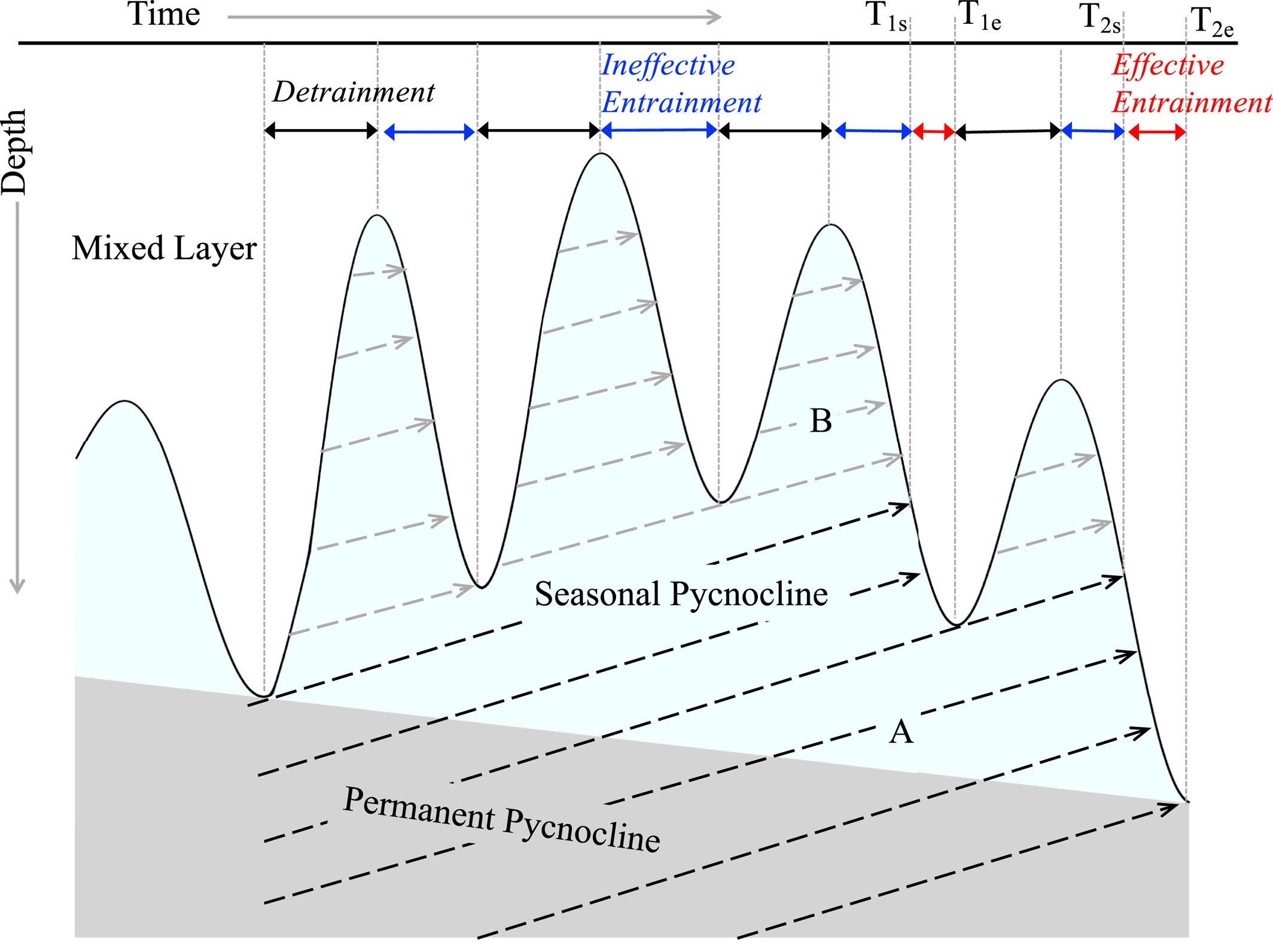Reduction of Equatorial Obduction by Atmospheric Intraseasonal Oscillations in the Western and Central Pacific Ocean
Lingling Liu, Yuanlong Li, Fan Wang
Published in Journal of Geophysical Research: Oceans, April 2022
Obduction is the large-scale, irreversible upward water transport from the permanent pycnocline to the surface mixed layer. Using Hybrid Coordinate Ocean Model (HYCOM), this study explores the impact of atmospheric intraseasonal oscillations (ISOs) on the Pacific equatorial obduction that plays a fundamental role in regulating the tropical Pacific climate. Parallel HYCOM experiments forced by atmospheric fields with and without ISO variability are compared to assess the effect of ISOs on the ocean. The results suggest that the ISOs can reduce the annual obduction rate of the western and central equatorial Pacific Ocean (WCEPO; 150°E−160°W, 5°S–5°N) by ∼12%, and their impact on the eastern Pacific is rather limited. The ISOs cause prominent intraseasonal variability of mixed layer depth (MLD) in the WCEPO primarily through surface wind forcing, which in turn affects the two key processes controlling the annual obduction rate. First, the intraseasonal MLD deepening events narrow down the total time windows for obduction by ∼30% and thereby give rise to the decrease in obduction rate; second, it leads to high-frequency entrainment events and enhances the entrainment rate by ∼18%. The increased entrainment rate is overwhelmed by the reduced time windows for effective entrainment, and the net effect of ISOs is to reduce the obduction rate and modify its seasonal cycle. This work highlights the importance of atmospheric ISOs in the equatorial ocean dynamics, with implications for tropical surface temperature and climate variabilities and biogeochemical cycle.

Fig.1 Schematic picture of obduction for the cases considering the high-frequency time-varying processes, modified from Figure 3 of Qiu and Huang (1995) and Figure 1 of Kawai et al. (2021). The solid curve depicts the instantaneous location of the mixed-layer base. Below the mixed layer, the azure/gray regions indicate the seasonal/permanent pycnocline, respectively. Dashed arrows denote the trajectories of water mass entering the mixed layer. Double arrows isolate the time windows for detrainment (black), ineffective entrainment (blue), and effective entrainment (red). In the period from T1s (T2s) to T1e (T2e), the permanent pycnocline water enters the mixed layer, which is defined as obduction. In the other periods with the entrainment phase, the water parcel entering the mixed layer originates from the mixed layer upstream in the previous year. This is referred to as ineffective entrainment.
Liu, L., Li, Y., & Wang, F. (2022). Reduction of equatorial obduction by atmospheric intraseasonal oscillations in the western and central Pacific Ocean. Journal of Geophysical Research: Oceans, 127, e2021JC017901. https://doi.org/10.1029/2021JC017901